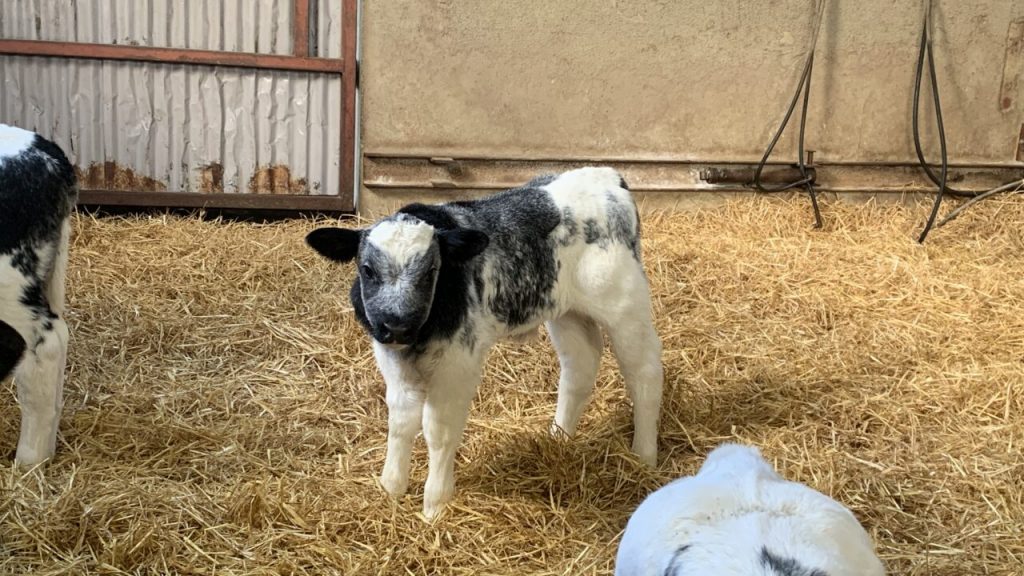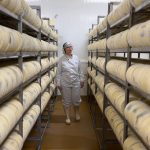
Based on the trade for dairy-beef calves across the country, it is evident that some changes have occurred.
The introduction of tools such as the dairy beef index (DBI) and commercial beef value (CBV) have made it a lot easier for both dairy and beef farmers to assess the quality of calves.
Speaking at the breeding event held in the Corrin Event Centre in Co. Cork on Thursday, March 28 Teagasc’s Dairy Beef 500 programme coordinator, Alan Dillon, outlined what beef farmers are looking for when buying calves.

Dairy-beef
Dillon explained that the majority of farmers buying calves are part-time, saying they are not poor with money – but they are poor with time availability.
He said that because of this, they want a calf that is not going to give them too much trouble.
The majority are buying less than 40 calves/year, with the calves taken to various stages depending on the system.
The calves are generally brought to complement another system on the farm, such as sheep, sucklers or tillage.
What they do not want according to Dillon, is calves more prone to health issues, such as pneumonia, scours, joint-ill, etc,.
This is due to the majority of them being part-time and not having the time to deal with sick calves.
Dillon said: “In terms of genetics, we do want the best genetics, but we do have a problem, not with the genetics in itself – but with over priced genetics.
“It is one thing to buy a good calf or buy a poor calf, it is what you pay for them – we can make money out of any calf if they are brought for the right price.”
Dillon said a Friesian bull at €50, can leave as much as a continental brought at €250 or €300, depending on where they lie in terms of CBV.

“The Friesian was a bit more of a safe bet, by in large you knew they were going to come into 300kg of carcass, they would be an O or a P and they would finish around 24 months.
“The problem was often buying poorer genetics within breeds, buying extremely poor Angus’s or Hereford’s, that where low down on the carcass value and finish at a lighter weight than the Friesian and cost €100 or €150 more.
“That was where the problem was lying and that was probably what gave some of this a bad name,” Dillon said.
Light calves
Dillon said another issue is light or young calves, he said: “If you look at marts in the last while – there is a hell of difference between a calf with a bit of weight and age, compared to a young calf that is very light.
“Farmers want something with a bit of structure, with of frame, bit of bone, something that is a little further along the line in the rearing process.
“You have to remember that these calves are only babies at the end of the day, they are young, they are susceptible to disease – so they want something with a bit less risk.
“That risk kind of goes out of it at the three to four week mark, so if you’re willing to hold calves for those three to four weeks, you have a lot more buyers than if your trying to sell them at 10 days to two weeks.”
He said that a light carcass at finish is another problem, but the CBV will counter act a lot of that.
With a lot more data coming on stream now, in terms of CBV and the genetics of the calves farmers are buying.
Selling calves
For dairy farmers selling calves looking to achieve reasonable prices for their calves, Dillon said they should avoid selling calves under 50kg.
“If your selling calves under 50kg your in that risk category of you might have to take them home or take €5 for them.
“Once you hit north of that 50kg and north of that three week mark, you have a lot more people interested in those calves and will give you a decent price for them.”
Dillon also advised that dairy farmers use the best genetic possible for their beef sires, one that is going to deliver carcass, don’t pick the one with +2kg of carcass.
“There is no excuse for using low carcass merit bulls, because that is all that matter to the beef farmer buying the calf.
“They do not care about what he was like to calf, what he was like in terms of gestation, they want the calf to be healthy and know that it will grow.
“The low CBV calves, we can still make money on them and you can move them off farm, it might mean that you will have to hold them a little bit longer.
“Once they are healthy and have some reasonable bit of genetics in them, farmers will take them.”
Price
The Dairy Beef 500 programme coordinator said it is important that farmers are reasonable when setting prices for their calves.
He said: “Setting the bar to high is an issue in some areas, if you have someone coming into your yard to buy calves you want them coming back next year.
“You do not want to blow them out and say you want €250 for these calves, they say no and you sell them in the mart for €150 – that is pointless.”

Dillon said what you want is someone that is going to arrive on the Saturday with their trailer and leave with the calves and keep coming back.
Building a relationship with a calf buyer is something that dairy farmers should be doing and to ensure they have a market for calves year-on-year.
You can now read the most important #news on #eDairyNews #Whatsapp channels!!!
🇺🇸 eDairy News INGLÊS: https://whatsapp.com/channel/0029VaKsjzGDTkJyIN6hcP1K

























